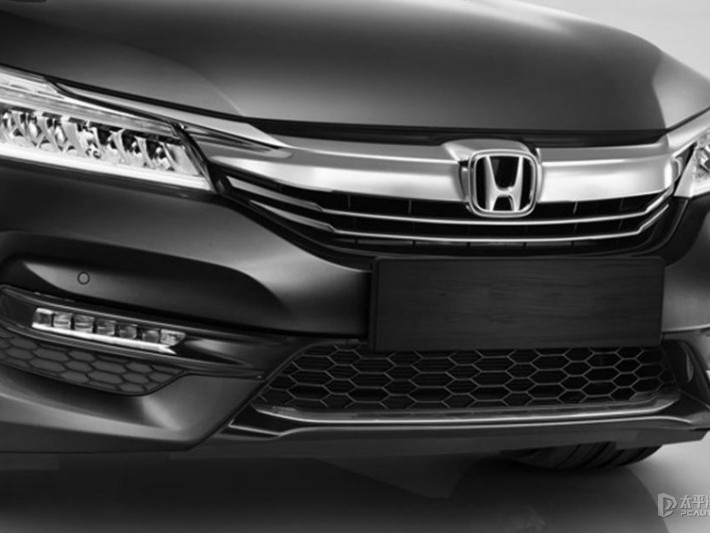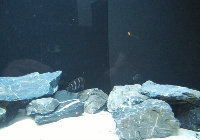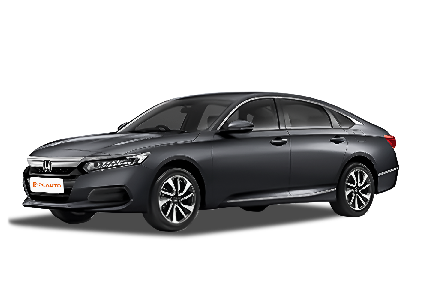Q
What Are the Honda Accord Dimensions? Get to Know Here
The Honda Accord belongs to the D-segment cars, and the dimensions vary slightly across different model years. The 2023 and 2020 models have a length of 4,901 mm, a width of 1,862 mm, a height of 1,450 mm, and a wheelbase of 2,830 mm. The 2018 2.0 VTi - L model measures 4,935 mm in length, 1,850 mm in width, 1,465 mm in height, with a wheelbase of 2,775 mm. The 2018 2.4 VTi - L Advance model shares the same length, width, and height as the 2.0 VTi - L, and also has a wheelbase of 2,775 mm.
These dimensions result in a relatively spacious interior, providing passengers with a comfortable riding experience. In particular, the rear - seat space performs well, which can meet the needs of family outings. The large body size also leads to a relatively large trunk capacity. For example, the trunk capacity of some models reaches 570 liters, making it convenient to load items.
Special Disclaimer: This content is published by users and does not represent the views or position of PCauto.
Related Q&A
Q
What Segment is Honda Accord?
The Honda Accord belongs to the D-Segment in the Malaysian automotive market, which is what we commonly refer to as mid-size luxury sedans. Vehicles in this segment typically offer spacious cabins, high levels of equipment, and a more refined driving experience. They're suitable for family users or business people who seek a balance between comfort and performance. The Accord has maintained strong competitiveness in the Malaysian market, thanks to its elegant exterior design, excellent fuel economy, and advanced technologies like the Honda Sensing safety suite. Competitors in the D-Segment in Malaysia also include models such as the Toyota Camry and Mazda6. When making a choice, consumers can decide based on brand preference, equipment requirements, and budget. It's worth noting that D-Segment cars in Malaysia are usually equipped with 2.0L or 2.5L naturally aspirated engines, and some models also offer hybrid options to meet the needs of different consumers. Additionally, these vehicles tend to have relatively high resale values, making them a good investment for long-term owners.
Q
What is the Reslae Value of Honda Accord?
The used car resale value of the Honda Accord in Malaysia has been relatively stable. It is one of the more popular models in the mid - size sedan market. Its resale value usually stays between 55% and 65% of the original price for 3 - year - old cars. The specific performance depends on factors such as the vehicle's condition, mileage, maintenance records, and market supply and demand.
The Accord has a continuous demand in the used car market thanks to its reliable powertrain, spacious interior, and the high recognition of the Honda brand in Malaysia. Models equipped with a 1.5T turbocharged engine or a 2.0L hybrid system are particularly favored. Additionally, vehicles that have been regularly serviced at authorized service centers and have complete maintenance records usually fetch a higher resale price.
It's worth noting that Malaysian consumers are quite sensitive to fuel consumption and maintenance costs. The Accord's balanced performance in these two aspects indirectly supports its residual value. If you're planning to buy or sell an Accord, it's advisable to refer to real - time data on local used car platforms like Carlist or Mudah and compare it with competitors such as the Toyota Camry or Mazda 6 of the same age to get a more accurate understanding of the market situation.
In the long run, Honda models generally have a higher resale value in Malaysia than European and American brands, but slightly lower than some Japanese competitors. This is related to factors such as brand reputation, stability of parts supply, and the proportion of local assembly.
Q
How Many CC is Honda Accord?
The engine displacements of the Honda Accord vary across different years and model versions. Currently, the Accord models commonly seen in the Malaysian market are mainly equipped with a 1.5 - liter turbocharged engine (about 1500cc) or a 2.0 - liter hybrid system (1993cc). The specific displacement depends on the vehicle configuration and the year of production. As a classic mid - size sedan from Honda, the Accord is well - favored by Malaysian consumers for its reliability and fuel efficiency. The hybrid version, in particular, is more suitable for local driving needs that emphasize energy conservation and environmental protection.
Engine displacement (CC) is one of the important indicators for measuring a car's power performance. However, the actual driving experience also needs to take into account comprehensive factors such as horsepower, torque, and gearbox tuning. In Malaysia's mountainous terrain and congested urban traffic conditions, the Accord stands out with its smooth power output and comfortable chassis performance. It is recommended to take a test drive at an authorized Honda dealership before purchasing a car to personally experience the actual performance of different power versions. At the same time, you can consult the detailed specifications of the latest model year, as automakers may adjust engine parameters with technological upgrades.
Q
What is the Engine in Honda Accord?
The engine options for the Honda Accord in the Malaysian market vary depending on the specific year and model version. Currently, the most common one is the 1.5-liter VTEC turbocharged four-cylinder engine, which has a maximum power of about 201 horsepower and is paired with a CVT transmission. This combination balances both power performance and fuel economy, making it suitable for both city driving and long-distance travel. For users who pursue higher performance, some overseas markets also offer 2.0-liter turbocharged or hybrid versions, but the Malaysian market mainly features the 1.5T models. Turbocharging technology can enhance the torque output at low RPMs, making acceleration smoother, while the VTEC system optimizes valve timing to improve combustion efficiency. The engine design of the Accord focuses on durability and low maintenance costs, meeting the Malaysian consumers' demand for reliability. If you're considering a used car, note that different generations of the Accord may be equipped with naturally aspirated or early turbo engines. It is recommended to confirm the vehicle's condition through professional inspections. Additionally, regular oil changes and maintenance of the turbo system are crucial for maintaining engine efficiency. Pay extra attention to the status of the heat dissipation and cooling systems, especially in the tropical climate.
Q
What is the Gearbox Type of Honda Accord?
The transmission types available for the Honda Accord in the Malaysian market mainly depend on different years and versions. Most of the current common models are equipped with a CVT (Continuously Variable Transmission), such as the 1.5T turbocharged version. Some hybrid versions use an E - CVT (Electronic Continuously Variable Transmission). Both designs focus on fuel economy and a smooth driving experience, making them suitable for the congested urban roads in Malaysia.
The CVT achieves stepless speed change through a steel belt drive and can continuously maintain the optimal speed ratio. The E - CVT in the hybrid system coordinates the power output of the engine and the electric motor, and its technical maturity has been verified in the global market. It's worth noting that in the early days, the Accord used traditional 5 - speed or 6 - speed automatic transmissions, but with technological upgrades, it has gradually transitioned.
Malaysian consumers can make their choices based on their own needs. If they pursue low fuel consumption and comfort, the CVT is an ideal choice. If they prefer hybrid technology, the E - CVT is better. It is recommended to focus on feeling the transmission's response speed and shifting logic during test drives. At the same time, regular maintenance is crucial for extending the lifespan of the transmission, such as replacing the special oil on time.
Q
What is the PCD Size of Honda Accord?
The PCD (Pitch Circle Diameter) of the Honda Accord is 5x114.3 millimeters. This means the diameter of the circle formed by the five bolt holes on the wheel hub is 114.3 millimeters. This specification is quite common among popular Japanese car models in the Malaysian market. For example, the Toyota Camry and Mazda 6 also use the same PCD, which makes it convenient for car owners to replace or upgrade their wheels.
Apart from the PCD, you also need to pay attention to the center bore diameter (CB) and offset value (ET) when choosing wheels. The CB of the Honda Accord is usually 64.1 millimeters, while the ET value varies slightly depending on the model year and configuration. It's recommended to check the original factory data or consult a professional technician before changing the wheels to ensure compatibility.
In Malaysia's hot and rainy climate, choosing lightweight wheels can improve fuel economy, and a sturdy alloy material can handle the local road conditions. Also, be aware that changing the wheel size may affect the accuracy of the speedometer and your insurance terms. It's advisable to choose wheel specifications that comply with JPJ standards to avoid legal issues.
Q
Does Honda Accord Have Apple Carplay?
Yes, some models of the Honda Accord in the Malaysian market are indeed equipped with Apple CarPlay. This feature allows iPhone users to directly use apps such as maps, music, and make calls through the in - car infotainment system, enhancing driving convenience. Whether a specific model is equipped with Apple CarPlay depends on the model year and configuration. For example, new - generation Accords after 2020 usually come with this feature in their high - end versions. It is recommended to confirm the specific configuration with local Honda dealers before purchasing a car.
The addition of Apple CarPlay makes the Accord more competitive in terms of intelligent connectivity. Meanwhile, Honda continues to optimize its in - car system, such as supporting wireless connection or providing a smoother operating experience. Apart from Apple CarPlay, some Accord models may also be compatible with Android Auto to meet the needs of different mobile phone users.
In Malaysia, many consumers are paying more and more attention to in - car technology configurations. Therefore, models like the Accord, which combine practicality and a sense of technology, are quite popular. If you're interested in automotive intelligent connectivity systems, you can also learn about similar features of other brands, such as Toyota's SmartDeviceLink or Mazda's MZD Connect. They each have their own characteristics, but their core goal is to make driving safer and more convenient.
Q
What is the Tyre Brand of Honda Accord?
The original-equipment tire brands of the Honda Accord in the Malaysian market may vary depending on the yearly model and configuration. Common combinations include internationally renowned brands such as Michelin, Bridgestone, or Continental. These brands are well - known for their wear resistance and quiet performance, making them suitable for the diverse local road conditions. For example, the Michelin Primacy series can balance comfort and wet - grip performance, while the Bridgestone Turanza emphasizes energy efficiency and durability.
When choosing replacement tires, in addition to referring to the original - equipment configuration, car owners should also take into account the rainy characteristics of the tropical climate in Malaysia. They should give priority to models with excellent wet - performance and well - designed tire treads for water drainage. It should be noted that the tire size must strictly match the specifications marked in the vehicle manual (e.g., 215/55 R17). When making modifications, it is essential to consult a professional technician to ensure driving safety and compatibility with the suspension system.
Regularly checking tire pressure and wear is the key to extending tire life. Especially in high - temperature environments, it is recommended to conduct a check at least once a month. If you're after higher performance, you can learn about new - technology products such as run - flat or self - repairing tires offered by local tire stores, but you need to confirm whether they are compatible with the vehicle's TPMS system.
Q
Is Honda Accord a Good Car? Learn the Pros and Cons Here
As a classic mid - size sedan, the Honda Accord has always attracted much attention in the Malaysian market. Its advantage lies in being equipped with the efficient and reliable Earth Dreams turbocharged engine, which offers a smooth driving experience and good fuel economy, making it suitable for local long - distance driving needs. At the same time, it comes standard with the Honda SENSING safety system, including functions such as adaptive cruise control and lane - keeping, which significantly enhances driving safety. In terms of the interior, it uses soft materials and ergonomic design, taking both comfort and practicality into account.
However, the rear headroom of this car is a bit cramped for tall passengers, and the hybrid version is priced relatively high in Malaysia, which may exceed the budget of some consumers. It's worth noting that the Accord performs excellently in air - conditioning cooling efficiency in tropical climates. Also, Honda has an extensive after - sales service network in Malaysia, and the parts supply is relatively abundant, which is very beneficial for the later maintenance of car owners.
But it is recommended that potential buyers compare models in the same class, such as the Toyota Camry or Mazda 6, according to their own needs. These models have their own focuses on noise insulation or handling. It's best to make a decision after a test drive.
Q
What is the Width of Honda Accord?
The body width of the Honda Accord varies depending on the specific generation and vehicle configuration. Take the tenth - generation Accord, which is common in the Malaysian market (2018 - 2023 models), for example. Its width is 1,862 millimeters (excluding the side mirrors), and it's nearly 2,150 millimeters when the side mirrors are included. This size is relatively wide among D - class sedans, providing more spacious seating and better driving stability.
The width design of the Accord also takes into account the road environment in Malaysia. For instance, when parking in the city or driving on narrow roads, drivers need to be a bit more careful. However, its steering system and optimized side - mirror visibility can help drivers adapt to local road conditions. The width of a comparable model, the Toyota Camry, is 1,840 millimeters. In comparison, the Accord is slightly wider, which reflects Honda's emphasis on interior lateral space and handling balance.
If you're planning to buy or drive an Accord, it's recommended that you pay attention to how the wide - body design affects your driving habits during a test drive. Also, you may need to be more cautious when passing through some old - fashioned parking lots or narrow alleys in Malaysia.
Latest Q&A
Q
How many miles per gallon does the Dodge Charger achieve?
The Dodge Charger's fuel economy varies depending on the specific trim and engine setup. Take the rear-wheel-drive model with the 3.6L V6, for example—it'll sip around 19-23 MPG in the city and stretch to 30-31 MPG on the highway. Step up to the high-performance 6.4L V8 HEMI, and you're looking at roughly 15-17 MPG in urban driving and 24-25 MPG out on the open road. If you opt for the even more beastly 6.2L supercharged V8 in the Charger SRT Hellcat, city fuel economy drops to about 12-13 MPG, with highway figures coming in at 21-22 MPG.
For our readers in Malaysia, keep in mind these numbers are based on U.S. EPA testing standards. Real-world fuel efficiency can vary depending on your driving style, road conditions, and fuel quality. Since Malaysia uses the metric system, you can convert these MPG figures to liters per 100 kilometers for easier reference (1 MPG ≈ 0.425 km/L).
Also, hybrid or future electric versions could offer better efficiency down the line. Before making a purchase, it's smart to check local specifications and tax policies—big-displacement engines might mean higher road taxes in Malaysia. And don't forget, regular maintenance and keeping your tires properly inflated can also help optimize fuel economy.
Q
When was Dodge Charger released?
The Dodge Charger first hit the scene back in 1966, and man, did it make a statement. As a classic American muscle car, it quickly became the poster child for power and style. That first-gen model packed some serious V8 heat, like the legendary 7.0-liter Hemi, setting the bar high for what a high-performance ride should be.
Over in Malaysia, you don't see Chargers cruising around every day—they're pretty rare birds. But when you do spot one, heads turn. Its bold, in-your-face design and brute force under the hood still hook a solid group of local gearheads.
Through the years, the Charger's gone through some major evolutions. The latest model? It's like they took that classic muscle soul and injected it with 21st-century tech. We're talking advanced driver-assistance systems, more efficient powertrains—think 3.6L V6 and 5.7L V8 options—and then there's the beastly Hellcat trim, rocking a 6.2L supercharged V8 that cranks out over 700 horsepower. Insane, right?
For Malaysian car fans, the Charger isn't just a car—it's a symbol of that wild, unapologetic American muscle spirit. Yeah, the local market's mostly dominated by Japanese and European rides, but you'll catch the occasional imported Charger rolling around, especially in enthusiast circles. Whether it's a vintage classic or a modern rocket ship, the Charger's history and raw performance have cemented its spot as an icon in car culture. And let's be real—either way, it's all about that pure, unfiltered American driving thrill.
Q
What is the sport traction control of the Dodge Charger?
In the Dodge Charger, Traction Control Sport is an electronic stability feature engineered specifically to amp up the driving fun. It dials back the traction control intervention when you're pushing the car hard, letting the rear wheels break loose a little in a controlled way. This helps you get more agile turn-in or even a little power slide, all while still keeping that baseline safety net in place.
You’ll usually find a button on the center console to kick it on. It’s right at home on a track or closed course, but for your daily grind on the streets, sticking with the default mode is the smart call for safety. Now, for our friends in Malaysia, those wet, rainy roads can up the ante on wheel spin, so definitely use this feature with a bit of extra caution.
Here’s the lowdown on how it works: sensors keep an eye on wheel speed differences, and if things start to get sketchy, the system automatically tweaks engine power or hits the brakes to keep you from losing control. Different brands slap different names on similar setups—like ESC Sport or VDC Off—but they’re all chasing that same sweet spot between safety and raw handling.
If you’re hungry to dive deeper into car electronics, check out stuff like electronic limited-slip differentials or torque vectoring. They’re all part of the tech package that makes modern performance cars handle as good as they do.
Q
How many miles can Dodge Charger travel?
For Malaysian consumers wondering about the Dodge Charger's durability, this American muscle car typically clocks in 320,000 to 480,000 kilometers over its lifespan—mileage that really hinges on how well you maintain it and your driving habits. With Malaysia's hot and rainy climate, make sure to pay extra attention to regular checks on the cooling system and rubber components. Stick to the manufacturer's recommended service interval of 5,000 to 7,500 miles (around 8,000 to 12,000 km), and using full synthetic oil will definitely help extend the engine's life. The Charger's Hemi V8 is known for being tough as nails, but stop-and-go city traffic can wear out the clutch faster. So, if you're regularly driving in congested areas like KL, consider shortening the gearbox oil change interval a bit. It's worth noting that the right-hand-drive version in Malaysia shares basically the same mechanicals as left-hand-drive models, and parts supply is solid through authorized dealers, keeping long-term ownership costs manageable. If you're eyeing a used model, focus on checking the electronics in post-2015 cars—their Uconnect infotainment systems can get laggy if not maintained, but that doesn't hurt the overall mechanical reliability of the car.
Q
How to install the cold air intake on Dodge Charger?
Installing a cold air intake system on your Dodge Charger is a solid mod that can boost both engine performance and fuel efficiency. First off, you’ll need to grab the right cold air intake kit—make sure it’s compatible with your Charger’s engine model. Here in Malaysia’s hot climate, go for intake tubes made from heat-resistant materials like aluminum alloy or high-density plastic; they’ll hold up better over time. The installation steps involve yanking out the stock air filter box, disconnecting the sensor plugs, fitting the new intake piping and high-flow air filter, and making sure all connections are sealed tight to keep unfiltered air out of the engine. Once it’s all set up, check if the check engine light comes on—if it does, you might need an OBD2 scanner to reset the ECU so it adjusts to the new air intake volume.
Basically, a cold air intake works by lowering the temperature of the incoming air, which increases oxygen density and improves combustion efficiency. But heads up: during Malaysia’s rainy season, you’ll want to add a waterproof shield to prevent the engine from sucking in water. Also, keep in mind that mods like this could affect your factory warranty, so it’s smart to check with an authorized service center before diving in. If you’re chasing even better results, pairing it with an exhaust system upgrade can help, but make sure everything stays within JPJ’s noise and emissions regulations.
View MoreRelated News

Starting from RM 187,400! A Honda Accord with sufficient trunk capacity, would you consider it?
AshleyJul 19, 2024

Honda N-ONE e: Officially launched in the Japanese market, with a range of 295 kilometers
AshleySep 12, 2025

Honda Prelude returns after 24 years, the sixth-generation Prelude will be released in Japan
Kevin WongSep 4, 2025

Honda S7 and P7 sales in China fall short of expectations, significantly lagging behind Toyota and Nissan.
RobertSep 4, 2025

The 2025 Honda Prelude Is Back: Hybrid-Powered Coupe with Type R Chassis Tech
JohnAug 4, 2025
View More













 Cars
Cars




Pros
Cons